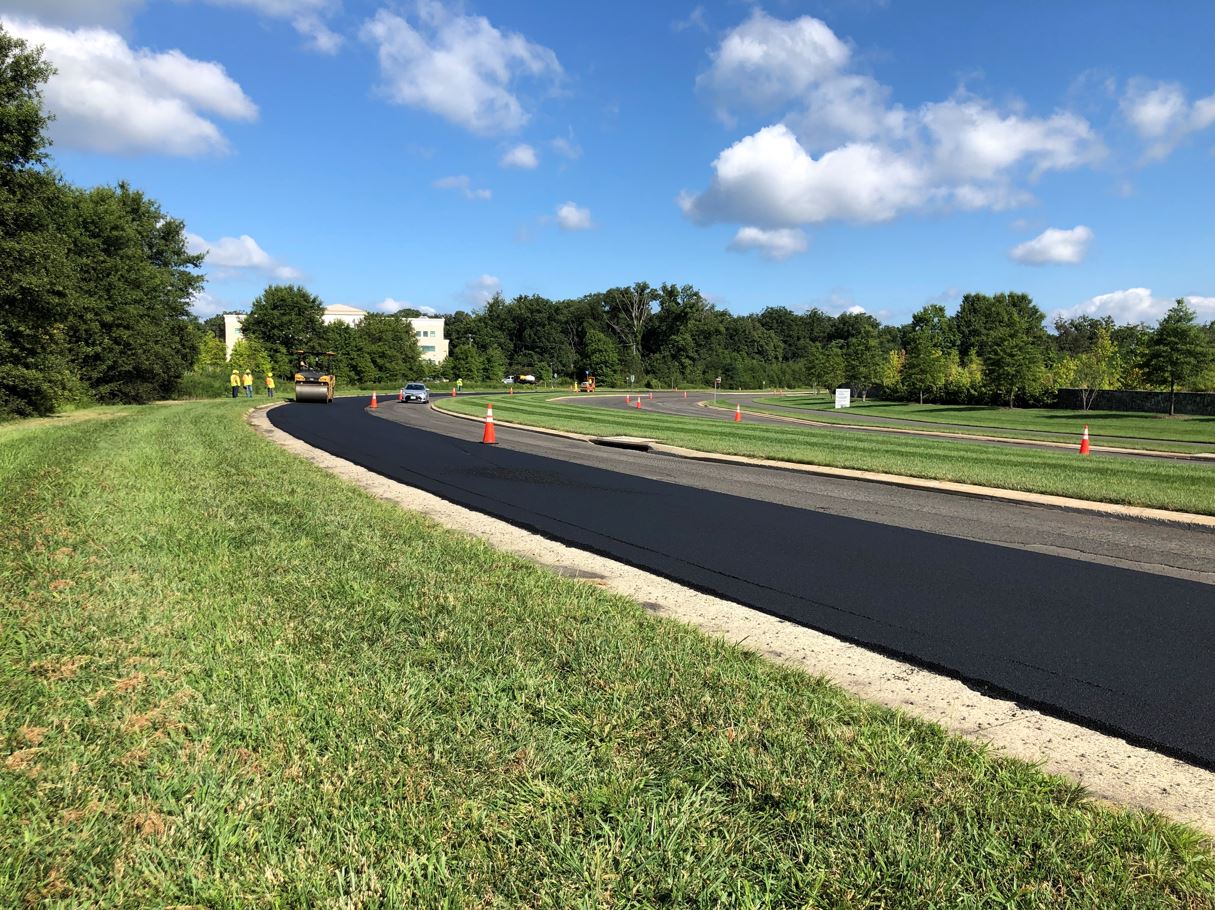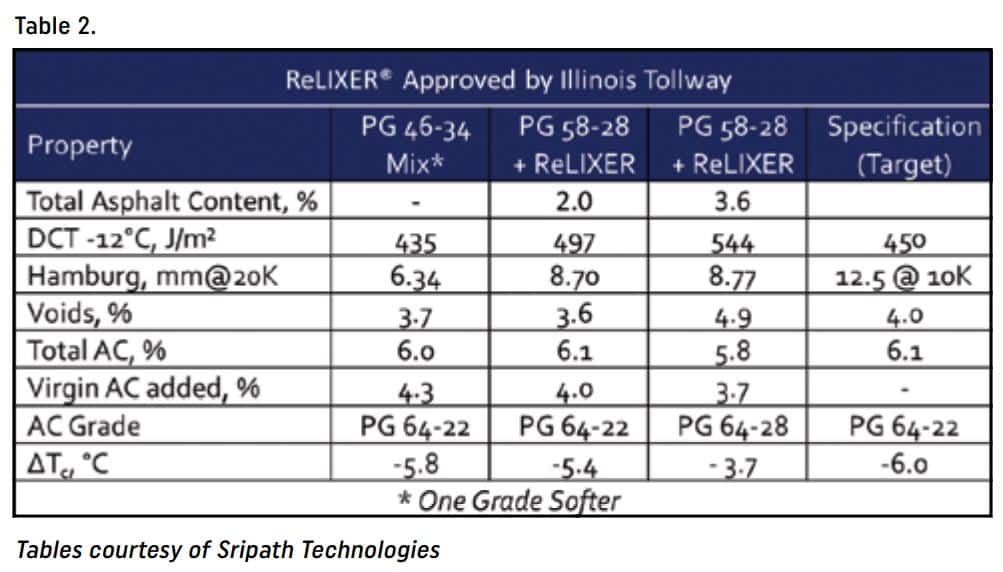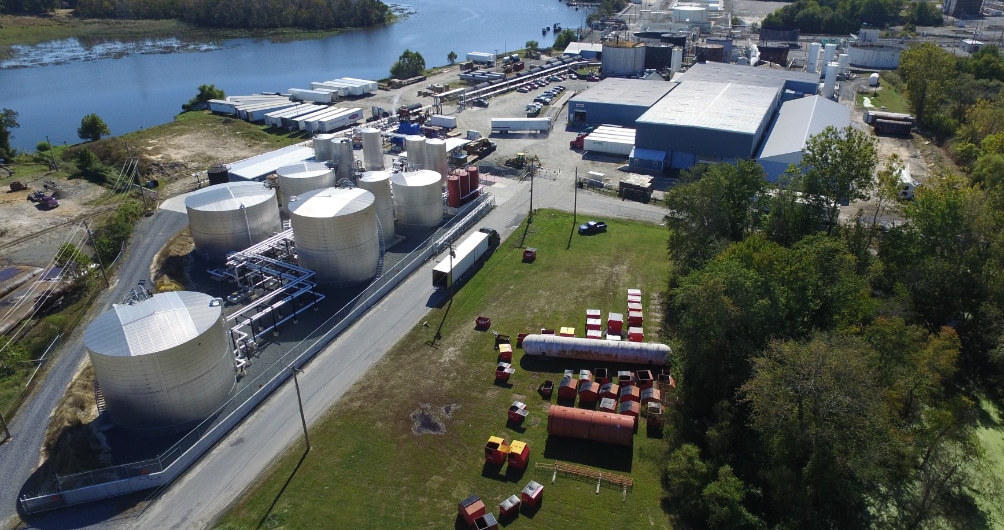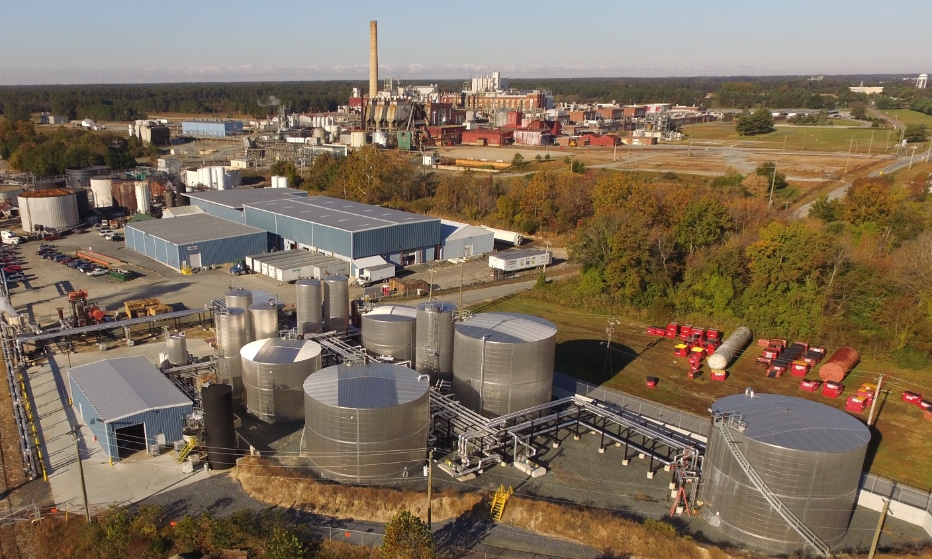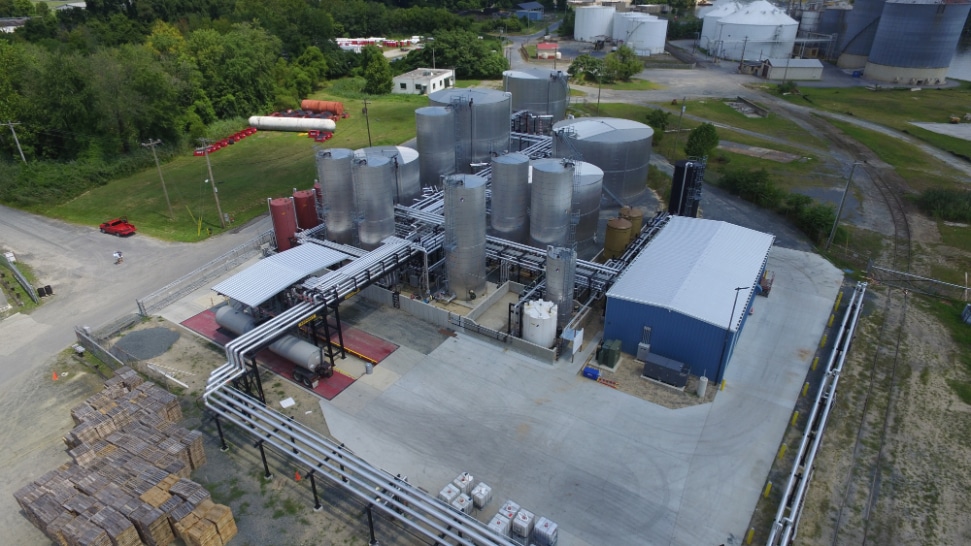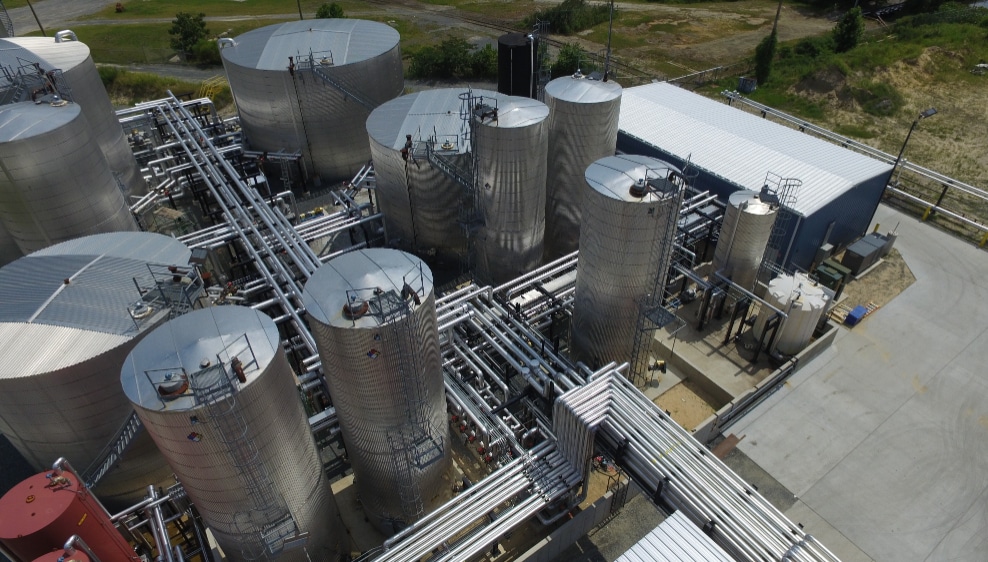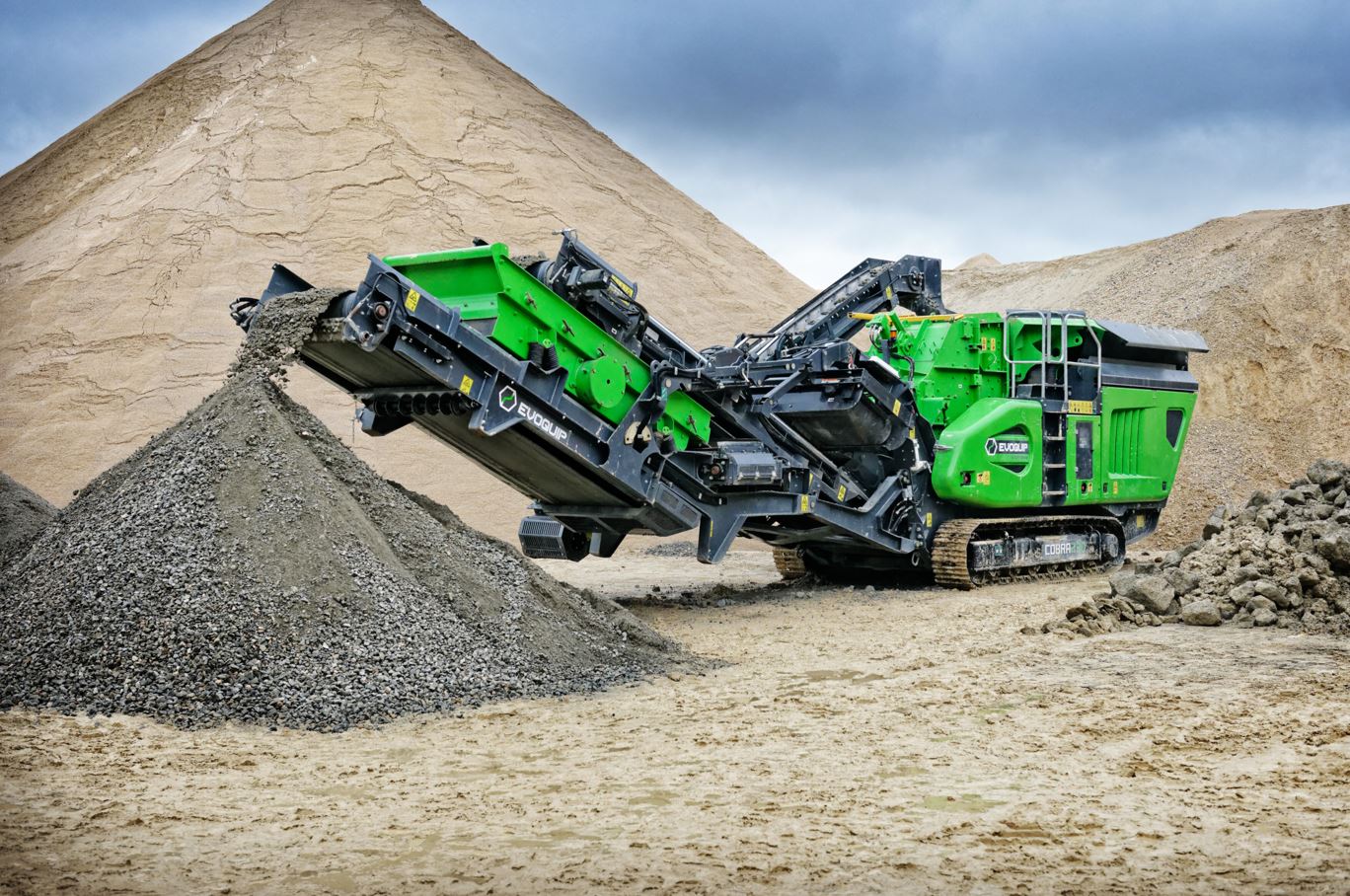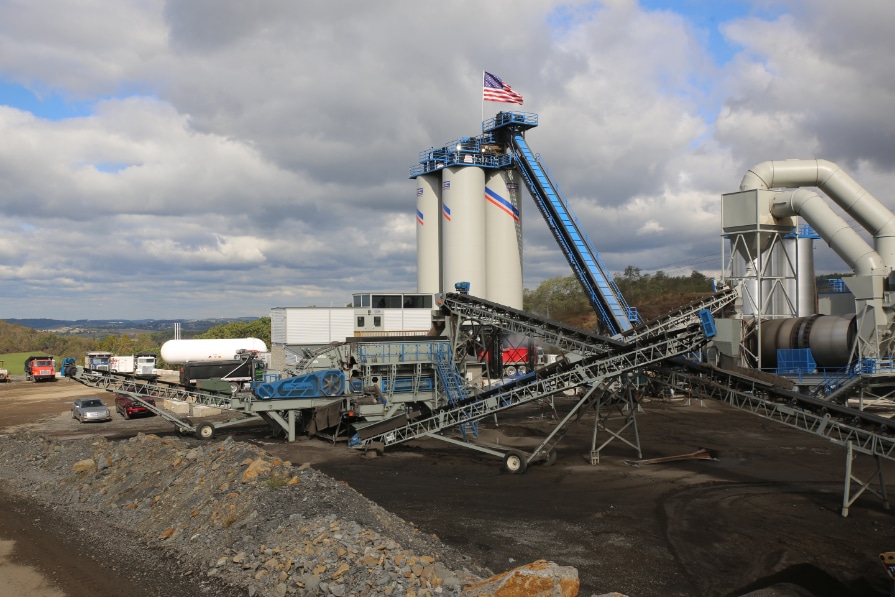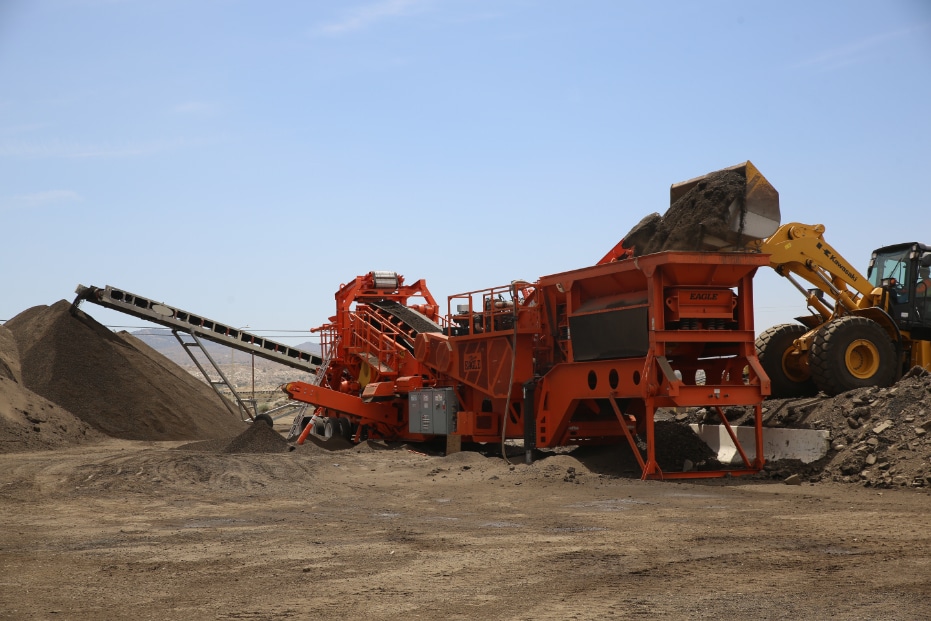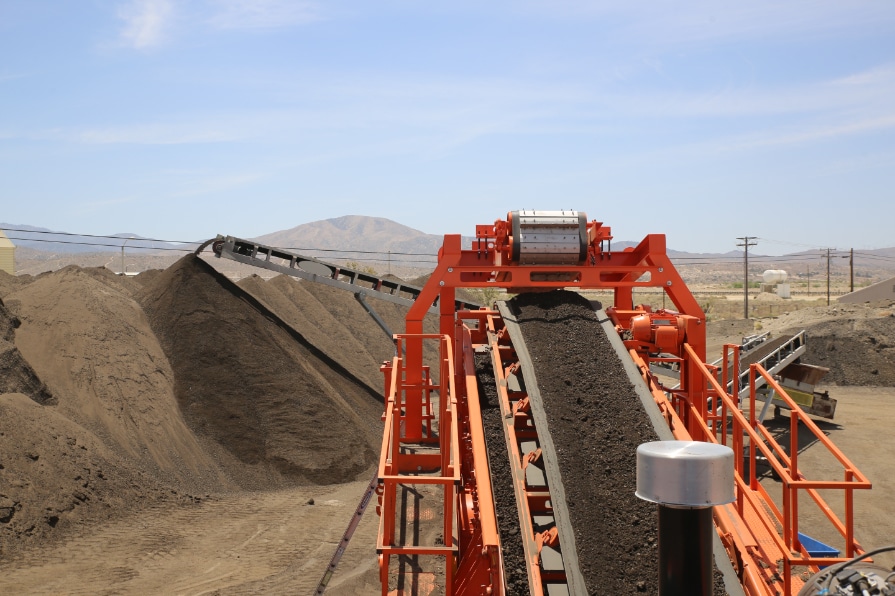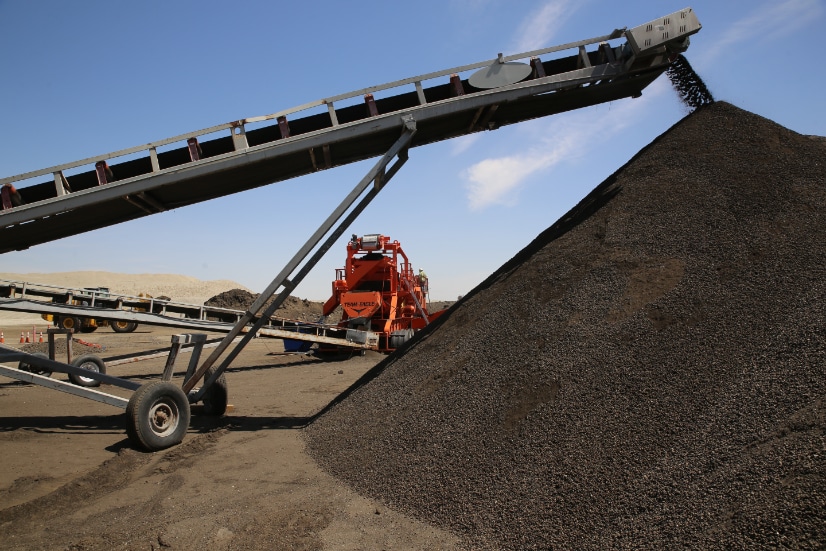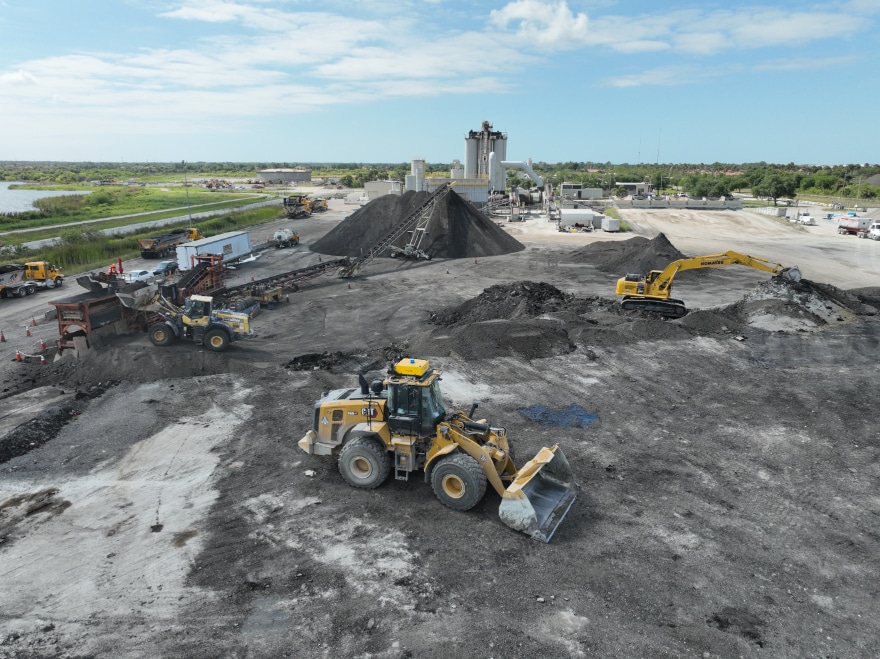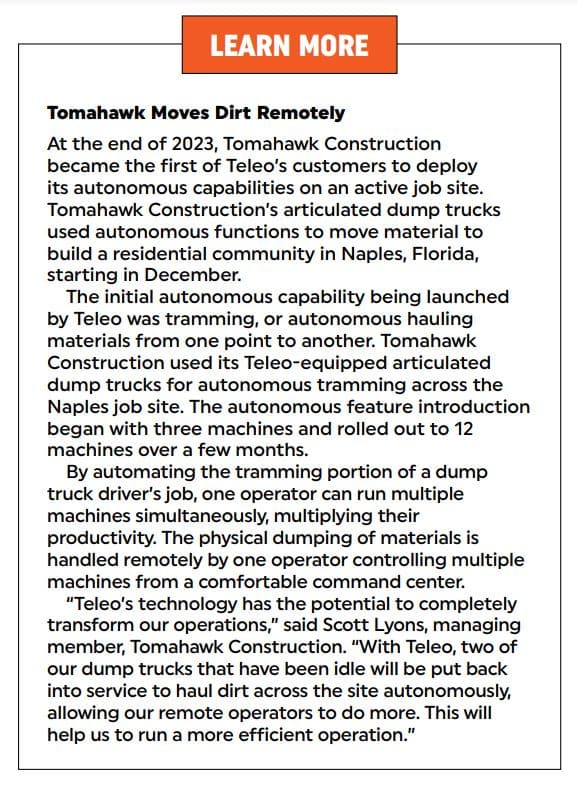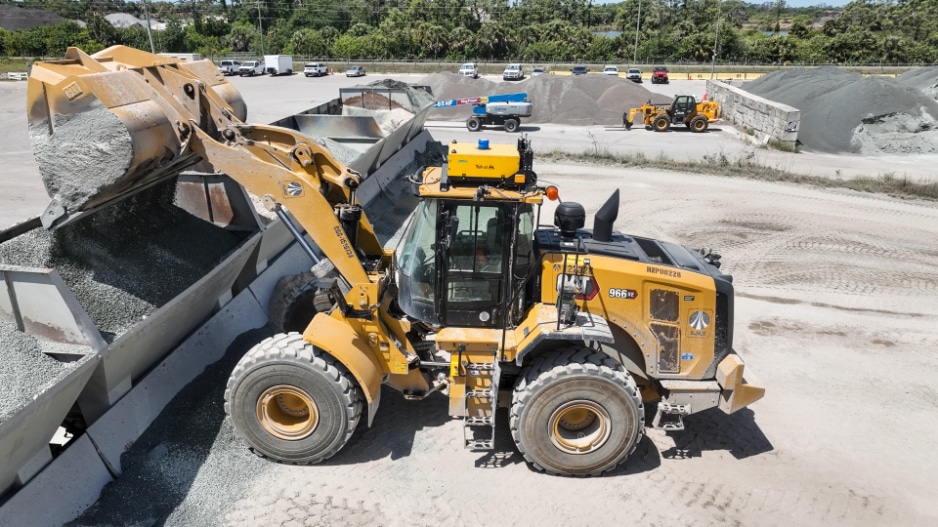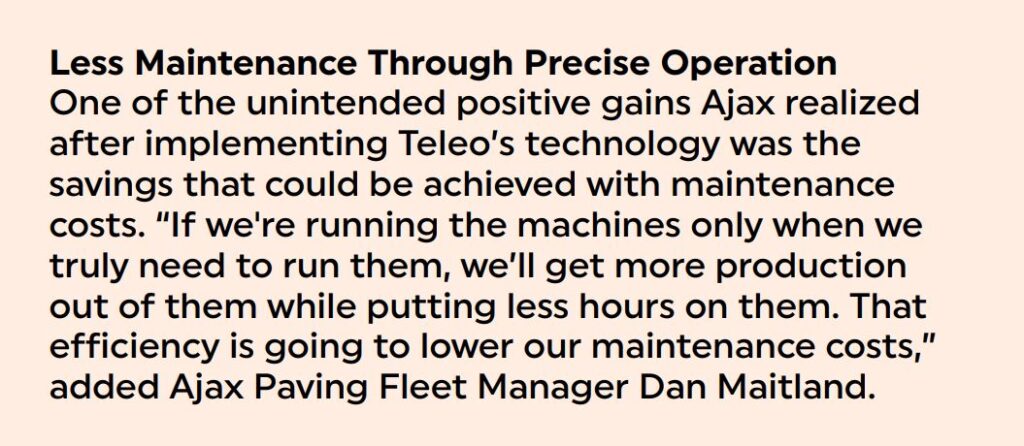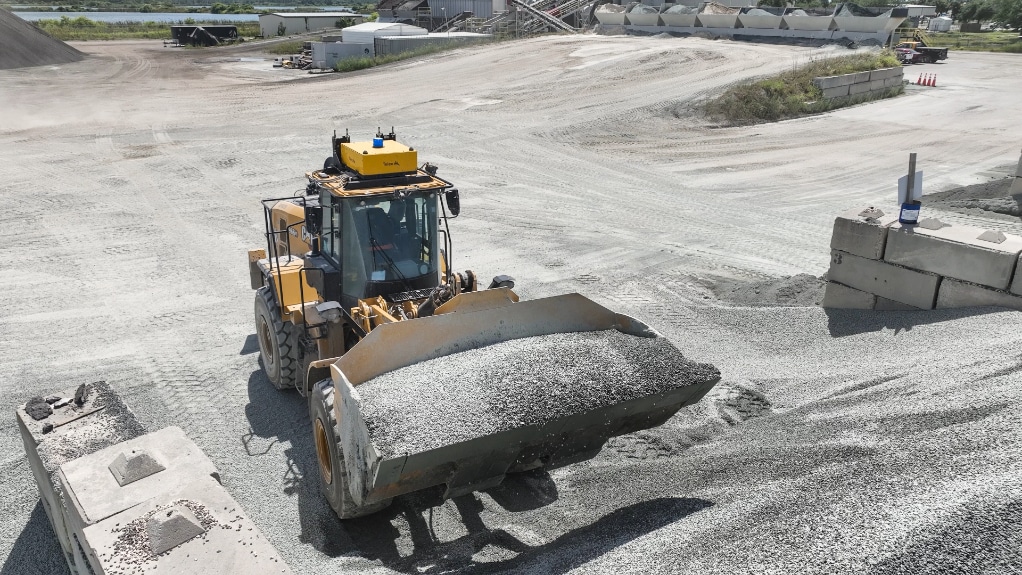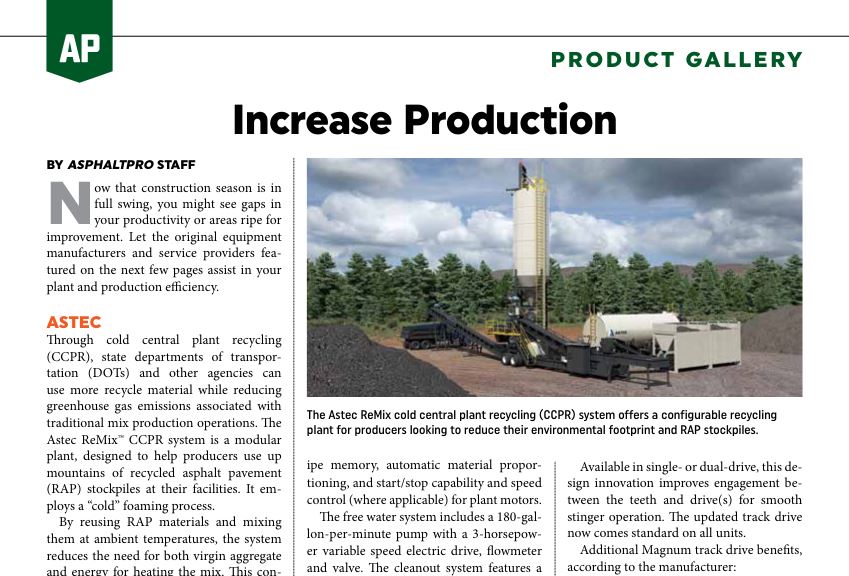Mobile asphalt crushing offers a range of benefits, from enhanced efficiency and flexibility to environmental benefits and lower costs. However, to harness these benefits, a crushing operation must operate efficiently or they risk wasting money on operating costs and limiting their production.
That’s why World of Asphalt 2024 brought together a panel of crushing contractors from around the country to discuss optimal crushing and screening setups, preventive maintenance processes, and common asphalt crushing problems.
Maintain it Before it Breaks
How to Set Up Your Mobile Crushing Site
When it comes to determining the setup of your mobile crushing operation, you must first know what you will be crushing, and what size you’ll be crushing it into. And, it largely comes down to reducing wear while maximizing production. “Your wear cost is very important,” said Ron Garofalo, president of DAG On-Site Crushing. “It’s not always about your production rate, it’s about your wear cost.”
For example, Allen Kurre of Kurre Contracting said, there’s no reason to run asphalt millings through the crusher. “It just causes unnecessary wear.” Eric Bruno, president at Midwest Crushing & Recycling, estimates 70% of asphalt millings won’t need to be crushed, so when he’s handling millings, he adds a scalper to screen out that material ahead of the crusher. “Scalpers are easy to set up, easy to move, and that 70% of material pays for the scalper real quick if you’re looking at large quantities.”
Garofalo provided another example that increases production and reduces wear by removing the screen deck and crushing 2-inch minus material when applicable. “It’s a very usable material for fill, because when I say 2-inch minus off an impact, there will be a lot of 1 ½ inch in there, a lot of ¾ inch in there,” he said.
Quick Tip: “With an impact crusher, you’re going to get very usable, symmetrical, compactable material,” Garofalo said. “With the jaw crusher, you might set it for 3 inches, but any material that can fit through the slot at the bottom is ‘done’ even if it’s 3×5 inches, so you’ll still need a secondary crusher when you’re running through a jaw.”
He uses a jaw crusher when crushing rock or as a primary crusher on large jobs. For example, they recently crushed 20,000 tons of concrete with rebar. “We ran it through the jaw, got the steel out with the magnet, and used our RM90 like a George Foreman grill,” Garofalo said. “We set it and forget it, because it’s getting fed 6-inch material all day from the jaw in front of it.”
Garofalo said using such a setup increased their production from 700 tons per day to 1,400 tons per day.
DJ Cavaliere of Cavaliere Industries has his own solution to maximize production. “We only make ¾-inch minus,” he said. “For years, we gave our customers whatever they wanted. Now, we’ve trained them that ¾-inch is all we do, so they bid their jobs knowing this. We aren’t going to change the screen deck or have a separate pile just because you want 200 tons of 1 ¼-inch.”
Cavaliere said this decision has been key to their business. “We do 25,000-30,000 tons on a yard the size of a postage stamp, where our waste bins hold 800 yards of material,” he said. “We probably have 500 yards of material on each end—finished and unfinished. What comes in goes right out.”
Bruno also makes only one product, ⅝-inch. They’ve configured a way to do so with a one-person operation. “I use my top screen as my finish deck and I don’t mess with my mids belt,” he said. “It looks funky, but it works.”
The operator feeds the scalper to size it, the finished product goes straight into the stacker and scale while the chunks go to the crusher. “I’ve got no material hitting the ground, it’s all hitting my stacker and my scale, so it’s making me money as fast as it can be processed,” Bruno said. “I’ve trained my customers that if that material hits the ground, it’s theirs to move. If I have to get a wheel loader out there, that’s going to increase their price.”
Garofalo has a different approach. “We’re a custom crushing company, so we crush what the people want,” he said. “We change our screens and we get paid to change our screens. It’s not for free. You have to get paid for what you do.”
Quick Tip: Garofalo told the audience to keep fines from getting into the crusher. “There’s less wear on an impact crusher crushing concrete all day than crushing fines.” He recommends taking care to minimize dirt and other fines when loading the crusher. For example, when striping slabs of concrete, the operator should avoid taking any dirt with the slab.
Peckham Quarries the Surface, Crushes Underground
Start with Good Material
One lesson every crushing operation must learn is ‘Garbage in, garbage out,’ Garofalo said. “We’re running impact crushers, not incinerators,” Bruno added.
He stresses the importance of looking at the piles your customers are asking you to crush. “If it’s going to be dirty, I’m going to have to budget this much more per hour because I’m going to have to clean, we need separation time, etc.” Bruno said. “We aren’t choosing what people bring us, but we charge accordingly based on what they bring us,” Cavaliere added.
If you can’t view the piles, Bruno recommends contractually protecting yourself. “It’s important in your contract that you say, ‘You’re liable for that, because I can’t show up to a job five hours away from my house and be expected to know what’s in that pile.’”
Quick Tip: Although most panelists reject petromat outright, Bruno has found a way to process it efficiently. “My crusher has a cross belt on the bottom so you can run your trash in the opposite direction, so I can spit the petromat back on the ground without getting out of my excavator,” he said. “We have a lot of petromat in southern Illinois, and the ability to handle petromat sets me apart in my area.”
There are some materials Bruno simply won’t touch. For example, if they spilt liquid AC at the asphalt plant and shove it up into the millings or the plant waste. “If I roll up and find that, I’m not touching that pile because once it gets in my crusher, it’s going to build up, stop up, and I’m going to spend hours chiseling,” he said. “I’m not there to clean my crusher, I’m there to crush material.”
Part of this approach requires empowering operators to make decisions about what goes in the crusher. “I tell my guys if they see something that shouldn’t be put in the crusher, shove it to the side. That’s the customer’s to deal with.”
Quick Tip: One material source that can be particularly problematic is demolition, Garofalo said. “I’m very picky when I go to a demolition job about how they demolish the building and what they’ve left in the building,” he said. Once, he walked away from a hotel demolition where the pile had telephones in it. “Years ago, buildings were knocked down and everything went into the landfill. You don’t demolish a building anymore, you dismantle it. Everything has a place today.”
Five Recycle Pain Points You Can Resolve
How to Choose the Best Blow Bars
“Selecting the right blow bars will depend on what you’re crushing and how you’re crushing it,” Garofalo said. The goal, of course, is to get optimal wear out of each set of blow bars regardless of the material from which they’re made.
Kurre prefers high chrome hammers for crushing asphalt, estimating they get 15,000-18,000 tons out of each set. Cavaliere also prefers high chrome hammers for crushing asphalt, adding that they have high wear resistance but can be brittle. “If you get something like a sledgehammer head that ends up going through the crusher, it will crack that hammer,” he said.
Since his company has moved away from supplying multiple types of material, they primarily use hammers with a ceramic inlay. “We get the best wear and minimal breakage with those,” he said, adding that they get roughly 250 hours out of each set.
Quick Tip: With a four blow bar system with two longs and two shorts, the operator is usually only changing two blow bars at a time. “Your longs become your shorts,” Garofalo said.
Bruno also prefers ceramic hammers. “They help take the heat off that steel and it increases our wear life,” he said, estimating they can get 20,000-25,000 tons per set in Illinois, where the rock is softer, but that the hard red rock they crush in Arkansas cuts that estimate in half.
Garofalo recommends high chrome hammers for crushing asphalt, but ceramic inlay hammers for concrete. Although his company crushes both materials, Garofalo said they don’t usually switch hammers if they are switching between asphalt and concrete regularly because of the time required—especially if they’ve been crushing asphalt due to potential AC buildup.
“If you have the choice and you’re doing both products, always run concrete through the machine a little bit before you’re going to change your blow bars because it loosens everything up,” Garofalo said. “That’s just one of those little things we just do because it saves half an hour or so.”
Ultimately, he said, it comes down to time and experience. “You have to watch, keep records, count hours, and you’ll learn for yourself what your optimum wear is out of what type of blow bar.”
Quick Tip: Pretty much all the panelists prefer square mesh screens and have minimal trouble with sticking. “Moisture kills everything in the material processing industry,” Bruno said, adding that if the material is wet, it’s going to stick. “If it sticks, we just go up there and tap the screen with a hammer and we’re good to go.”
Crush for Cubical Aggregate
How to Keep Components Clean
One challenge when crushing asphalt in particular is that some of the fines will become airborne. When they hit the radiator or any other hot component, the AC will reliquify and stick to that component.
To prevent this from happening, Kurre recommends paying attention to the way the wind is blowing to minimize dust circulating to these critical components. Cavaliere recommends doing all you can to keep the dust down. “Our philosophy is to add more water to drop those dust particles to the ground,” he said. They also try to mix plant waste, which can be warm, with older millings to let it cool.
Daily maintenance is also key. Garofalo has a service truck out with every crew every day to meet the crew’s maintenance needs.
“We find keeping our [radiator] blown out every day and paying attention to the way the wind blows is usually enough,” Bruno said. “When we do have some build up, I found that spraying the radiator with a citrus spray and pressure washing it with hot water will break that stuff down and melt it right off.”
For Kurre, radiator buildup has been a significant problem. In the past, they’ve had an extra radiator on site so they can swap them out when the buildup gets too bad. “We’d have one in the machine and the other in a tub of citrus,” he said. Then, they began using miner’s moss around the outside of the machine to protect internal components. “That works really well for us. We can take it off, clean it, reuse it, throw it away when it gets too bad.”
Quick Tip: Cavaliere recommends on cold nights putting antifreeze on the inside of your belts to prevent them from freezing overnight. Garofalo added that you should always run your belts to fully clear out your machine, especially in cold weather. “If you have debris left in there and there’s a rainstorm that night and it gets cold…you’re done,” he said. “There’s nothing you can do until it gets a little warmer. Or else you’ll be tarping it and heating it with space heaters and you won’t start working until 9 a.m.”
Four Steps for Cleaning Disc Springs
How to Load the Crusher
“Crushing is the easy part, as long as the material has been prepared correctly,” Garofalo said. When it comes to crushing, slow and steady wins the race, he added. “We sometimes get calls from customers who think we aren’t loading the crusher fast enough, but I tell them as long as material is coming out of the final belt, there’s no sense putting anymore in the crusher because it’s not going to crush any faster.”
That’s because it is so important to check materials before loading them into the crusher. The way Garofalo handles this is by training operators to maximize the number of opportunities they have to check the material. “The first point is your ground man, and he’s looking all the time,” Garofalo said. “The second is the excavator operator is pushing that pile out [to see what’s in it] and scooping up that same pile each time.”
The third is by loading the back of the feeder for more time to see if anything undesirable is headed into the crusher so you can stop the feeder and remove it. “If you go to feed undesirable material into the crusher, you’re going to be inside the chamber getting it out,” Garofalo said.
Cavaliere’s approach is to use a 2-foot bucket all day long. “I don’t care if the operator has to make an extra cycle,” he said. “[If you’re loading too much at a time] you may not know you’ve put a rock in there that’s way too big and they’re not getting material through because they’re overfeeding it and jamming it.”
“I’d rather do 100 tons an hour all day long than 200 tons an hour for two hours,” Cavaliere said. “You’ve got to reduce that black belt time, and that starts with the prepping and feeding.”
Bruno uses a 3-foot bucket for a similar reason, adding that versatility and the ability to use a smaller bucket is why he opts for excavators instead of wheel loaders to feed the crusher. He’ll sometimes use a 60-inch bucket on his excavators if he’s crushing asphalt and using his screens, “but we’re still watching what we’re putting in.”
“You have to understand somebody’s going to throw teeth in a pile and you’re going to run it through your brand new machine and ruin $8,000 worth of hammers,” Bruno said. “You have to be cautious.”
Garofalo hit this point home with an example from a job where they were crushing 4,000 tons of asphalt millings and chunk asphalt. “You’d think there’d be no steel in it, but we came across a 988 loader tooth,” he said. Knowing if there was one there was likely to be more, that two-day job turned into a full week. “But we found every tooth! I don’t know why a mechanic would throw teeth in the asphalt pile, because he probably could have gotten a nice dollar in scrap for those, but you can’t take anything for granted when you’re loading the crusher.”
These best practices ultimately come down to the operators. “The operator is the most important part of the equation,” Garofalo said. “They have to be looking, they have to be able to hear. They can’t be operating with earbuds in so they can hear a rock caught on the belt and stop the machine.”
Kurre recommends having the same operator run the same machine every day, even in mobile operations. “You don’t want to bring your crusher to the job and have just any operator start loading it because he’s going to try to load it as fast as possible like it’s magic.”
About the Panelists
Eric Bruno is president at Midwest Crushing & Recycling. The company started crushing in 2009 and last year crushed 100,000 tons of asphalt and 120,000 tons of concrete in southern Illinois, southeast Missouri and northeast Arkansas.
DJ Cavaliere is with Cavaliere Industries, Stamford, Connecticut, which is a site contracting company started in the 1950s.
Ron Garofalo is president of DAG On-Site Crushing in New Jersey. Originally a paving company, they purchased their first crusher in 2005 to recycle their own material, but the crushing business quickly grew to serve outside customers as well.
Allen Kurre of Kurre Contracting has been crushing since 2004. They used to crush rock, but today the company focuses on concrete and asphalt, crushing around 150,000 tons per year.
